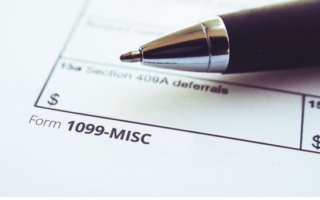Covid-19 and Its Impact on Homeowners’ Property Claims
Apr 24, 2020
Published on Insurance Law360 and Texas Law360 on May 4, 2020.
Business interruption claims have led the news about Covid-19 insurance disputes. Ahead though could be property claims made pursuant to homeowners’ policies. Insurance carriers can expect a wide-variety of claims, including loss of fair market value, claims for alternative living expenses due to family member testing positive, and claims for bodily injury caused by the virus or property damage due to Covid-19. This article focuses on claims for property damage, whether contact with Covid-19 constitutes a “direct and physical loss”, and whether any exclusions would likely apply.
Does Covid-19 constitute a “direct and physical loss”?
In situations where property comes in contact with a virus, such as Covid-19, whether the property is considered damaged per the policy is not always clear. Most homeowners’ policies grant coverage for “direct physical loss or damage to covered property at the insured premises caused by or resulting from a covered cause of loss.” Hail, wind, and fire damage typically satisfy this definition. However, with Covid-19 and other viruses, the claimed damage is not often visible to the naked-eye, likely resulting in a coverage dispute between the carrier and the insured.
So, the question remains: if property comes in contact with Covid-19, does it constitute a “direct and physical loss”? Possibly. There is no clear-cut rule as to when a property has sustained “direct physical loss or damage.” Some courts have held that, to constitute a “direct and physical loss”, the property must suffer a distinct, demonstrable, and physical alteration.[1] Other courts have found that the loss of use or inhabitability of insured property, under certain circumstances, can constitute “physical loss or damage.”[2]
For Texas, a decision that would seemingly support no “direct or physical loss” in Covid-19 claims is the Glenn Falls decision.[3] In Glenn Falls, a policy provided coverage against “ALL RISKS OF PHYSICAL LOSS OR DAMAGE” to certain vehicle safety stabilizers owned and sold by the insured. The stabilizers fell from a storage area to the floor. Because the stabilizers were sealed units, they could not be inspected for damage. Thus, it was not known if the stabilizers suffered any physical or internal damage. In affirming the trial court, the Court of Appeals held that because “there was no physical loss or damage,” the insured could not recover. In rendering its decision, the Court focused on the functionality between the stabilizers involved in the fall and units which had not been involved in the fall. Finding no difference in functionality between the two, the Court held that this “was a type of loss not covered” and the insured had “no evidence of physical loss or damage.” If a court follows this reasoning, an insured will need establish that property in contact with Covid-19 suffered a loss in functionality that otherwise would not have occurred.
Alternatively, many courts have concluded that contaminants such as smoke, odor and toxic gases, as well as losses to intangible property, can constitute a direct physical loss or damage, even without functional damage. In Lambrecht v. State Farm Lloyds[4], the court held that the loss of physical information on a computer system due to a computer virus constituted a physical loss. While the computer system itself was functionally the same, the court held that physical damage was not restricted to physical destruction and could include loss of access or loss of use. A court extending this line of logic could find that the insured suffered a “direct and physical loss” if the subject property came in contact with Covid-19, assuming an insured is able to demonstrate loss of access or loss of use. Ultimately, whether Covid-19 will be considered a “direct and physical loss” under the terms of the policy will depend on the specific policy language and property loss in dispute.
Are there any policy exclusions that could apply?
Even if an insured meets the threshold of proving that Covid-19 contact constitutes a “direct and physical loss”, policy exclusions may apply to preclude coverage. Many homeowners’ policies have a pollution exclusion, which typically excludes “any solid, liquid, gaseous or thermal irritant or contaminant, including smoke, vapor, soot, fumes, acids, alkalis, chemicals and waste.”
In Travco Ins. Co. v. Ward[5], insureds made a claim for property damage due to their drywall releasing a toxic gas. The drywall had been manufactured in China, and aside from the emanating gas, no visible damage was observed. The Court sided with the carrier, holding that while the contaminated drywall constituted a direct and physical loss, the carrier properly excluded coverage based on the pollution exclusion, finding that pollution exclusions in insurance policies are not limited to traditional environmental pollution.[6] Relying on this opinion, the carrier could claim that, despite Covid-19 not being a “traditional” environmental pollution, such as smoke, vapor, soot, etc., the pollution exclusion still applies.
Some policies contain a more specific exclusion based on property loss due to virus or bacteria, which can exclude “loss or damage caused by or resulting from any virus, bacterium or other microorganism that induces or is capable of inducing physical distress, illness or disease.” This exclusion should apply to preclude coverage for Covid-19-related losses.
Whether the carrier can rely upon an exclusion in its coverage determination for Covid-19 property claims is uncertain and the specific policy language and intent of the parties will be important.
Other Considerations
It is well settled under Texas law that the insured bears the initial burden of showing that there is coverage under the policy.[7] In insurance litigation involving Covid-19 property damage claims, the insured will have to first establish his or her property suffered a direct and physical loss. The type of evidence necessary to meet this burden will be challenging and likely include objective, scientific testing showing a demonstrable change in the property due to the presence of the virus. This burden is compounded by the lack of available tests and the short duration Covid-19 remains on surfaces. In most cases, creativity will be required to survive dispositive motion on the issue of a demonstrable direct, physical loss.
Presuming an insured is able to satisfy this burden, the duty to prove whether an exclusion applies is shifted to the carrier.[8] Whether the carrier will be successful largely depends on the specific policy language and an openness by courts to look to analogous case law, extending those principles to this unique occurrence, Covid-19.
The litigation has commenced. How courts will ultimately handle Covid-19 property litigation remains to be seen.
[1] See, e.g., Great Northern Ins. Co. v. Benjamin Franklin Federal Sav. & Loan Ass’n, 793 F.Supp. 259 (D.Or.1990), aff’d, 953 F.2d 1387 (9th Cir.1992) (finding costs to remove asbestos and lost rental income were not covered under a property insurance policy because the insured building did not sustain the necessary “direct physical loss” where the building itself remained physically intact and undamaged, and the insured’s only loss was economic); MRI Healthcare Center of Glendale Inc. v. State Farm,115 Cal. Rptr 3d 27 (Ct. App. 2010) (holding that there must be some “distinct, demonstrable, physical alteration of the property” for coverage to apply).
[2] See, e.g., TRAVCO Ins. Co. v. Ward, 715 F.Supp.2d 699 (E.D. Va. 2010) (finding that the insured had at least met its burden of “bringing itself within the policy” when a home had been allegedly rendered uninhabitable due to odors and corrosion caused by Chinese drywall); Matzner v. Seaco Ins. Co., 9 Mass. L. Rptr. 41, 1998 WL 566658 (Aug. 12, 1998) (recognizing the split of authority as to whether the phrase “physical loss or damage” can include more than tangible damage to the structure of the insured property. Finding the term ambiguous, the court held that carbon monoxide contamination constitutes “direct physical loss of or damage to” property and therefore, was covered by the policy).
[3] See e.g. Glenns Falls Ins. Co. v. Covert, 526 S.W.2d 222 (Tex.Civ.App.1975).
[4] Lambrecht v. State Farm Lloyds, 119 S.W.3d 16 (Tex. App.–Tyler 2003, no pet.).
[5] Travco, 715 F.Supp.2d at 699.
[6] Notably, the courts are split on this issue. In the Eastern District of Louisiana, the Court in In re Chinese Manufactured Drywall Products Liability Litigation declined to follow Travco Ins. Co. v. Ward, and held that Chinese drywall emanating a gas both constituted a direct and physical loss and was not excluded under the pollution exclusion. In re Chinese Manufactured Drywall Products Liability Litigation (In re Chinese Drywall Litigation), 759 F.Supp.2d 822 (E.D.La. Dec. 16, 2010).
[7] Gilbert Tex. Constr. LP v. Underwriters at Lloyd’s London, 327 S.W.3d 118 (Tex. 2010) (“Initially, the insured has the burden of establishing coverage under the terms of the policy.”); L.P. Employers Cas. Co. v. Block, 744 S.W.2d 940 (Tex. 1988) (“An insured cannot recover under an insurance policy unless facts are pleaded and proved showing that damages are covered by his policy.”); Venture Encoding Servs., Inc. v. Atlantic Mut. Ins. Co., 107 S.W.3d 729 (Tex. App.—Fort Worth 2003, pet. denied).
[8] Tex. Ins. Code Ann. Art. 21.58(b) (Vernon Supp. 2002); See Adamo v. State Farm Lloyd’s Co., 853 S.W.2d 673 (Tex. App.—Houston 14th Dist. 1993, writ denied); Telepak v. United Servs. Auto. Ass’n, 887 S.W.2d 506 (Tex. App.—San Antonio 1994, writ denied).







